What is Ceviche?
Ceviche is a vibrant seafood dish where fresh fish or shrimp is “cooked” not with heat, but through marination in citrus juices. This refreshing Latin American specialty transforms raw seafood into a bright, flavorful delicacy through the acidity of fresh lime juice. The dish combines tender seafood with crisp vegetables, aromatic herbs, and a perfect balance of heat for a light yet satisfying culinary experience.
What Does Ceviche Taste Like?
Ceviche offers a symphony of bright, tangy flavors complemented by the natural sweetness of fresh seafood. Each bite delivers a refreshing burst of acidity from lime juice, followed by the delicate texture of fish that’s firm yet tender. The dish awakens the palate with aromatic cilantro, the sharp crunch of red onion, and a pleasant heat from jalapeños. The overall experience is incredibly refreshing and vibrant—perfect for warm weather dining. The mouthfeel transitions beautifully from the tender seafood to crisp vegetables, creating a satisfying textural contrast.
The Other Ceviche Variation – Shrimp Ceviche
While traditional ceviche relies on white fish like sea bass or snapper, shrimp ceviche offers a distinct variation with its own unique appeal. Shrimp ceviche can be prepared using either the traditional raw marination method or a partially cooked approach where the shrimp is briefly poached before marinating. The poached method offers greater food safety and works perfectly with store-bought frozen shrimp, while raw preparation provides deeper flavor infusion but requires ultra-fresh, sashimi-grade shrimp. The texture differs as well—raw-marinated shrimp provides a firmer bite, while heat-cooked shrimp delivers more tenderness.
Don’t Want to Make Ceviche?
If preparing fresh ceviche seems daunting, several alternatives can satisfy your craving with less effort. Look for high-quality prepared ceviche at seafood counters in upscale grocery stores or Latin American markets. For a similar flavor profile with less preparation anxiety, try a seafood salad with pre-cooked shrimp dressed in citrus vinaigrette. Alternatively, enjoy ready-made ceviche at authentic Latin American restaurants where they’ve mastered the proper preparation techniques and sourcing of quality seafood.
Recipe History/Cultural Context
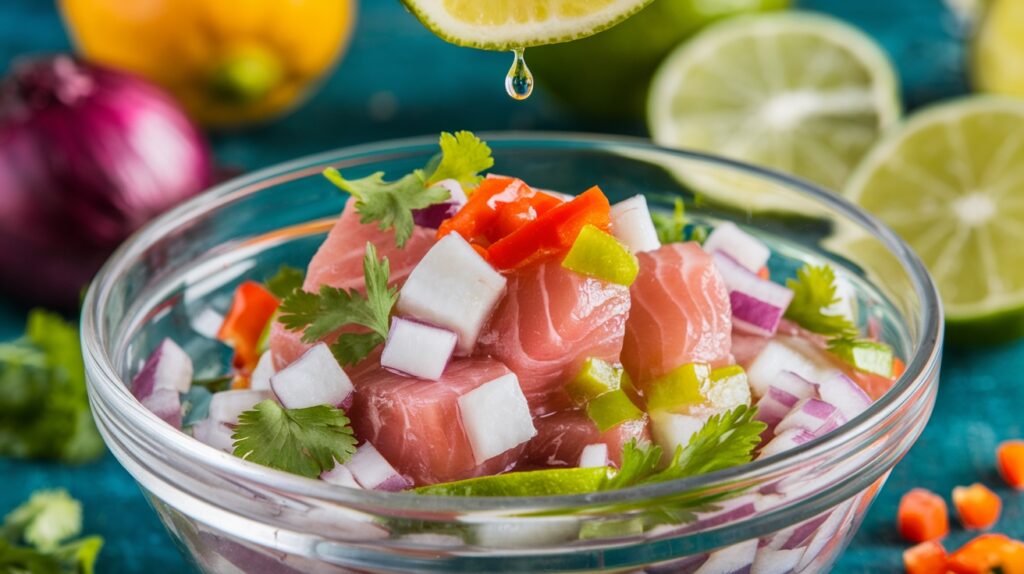

Ceviche has deep roots in Latin American coastal cuisine, particularly in Peru where it’s considered a national dish. This preparation method emerged as a practical way to preserve and enhance fresh seafood in warm coastal regions. Traditional Peruvian ceviche is often served with sweet potato and choclo (Peruvian corn), reflecting indigenous ingredients alongside the Spanish-influenced citrus marinade. The dish has evolved across different regions—Mexican ceviche often includes tomatoes and avocados, while Ecuadorian versions might include tomato sauce. Today, ceviche represents a celebration of fresh, local seafood prepared with minimal intervention to highlight its natural qualities.
The Secret to Perfect Ceviche: The One Thing You Must Know
The absolute key to perfect ceviche is precise marination timing. Unlike other marinades where longer means better flavor, ceviche requires discipline and restraint—you’ll want to marinate your fish for just 10-15 minutes, no more, no less. This brief window strikes the perfect balance between flavor development and texture preservation. Any longer and your delicate seafood becomes mushy and “overcooked” by the citrus acids; any shorter and you won’t achieve that characteristic ceviche transformation. Watching the clock carefully as your fish bathes in its citrus marinade guarantees each bite offers that fresh, firm texture ceviche lovers crave.
Don’t Fear the Raw Fish!
Many home cooks feel intimidated by preparing raw seafood, but ceviche is actually one of the safest ways to enjoy uncooked fish when handled properly. The key lies in sourcing your seafood from reputable suppliers that specialize in sashimi-grade offerings. The high acidity in lime juice denatures proteins similarly to heat cooking, helping to neutralize potential pathogens. For added peace of mind, you can opt for briefly poached shrimp instead of raw fish, or use the partially “cooked” approach where you marinate until the fish just turns opaque. By maintaining proper refrigeration before, during, and after preparation, you’ll enjoy safe, delicious ceviche without worry.
Equipment Needed
- Glass or ceramic mixing bowl (never metal, which can react with citrus acids)
- Sharp knife for precise cutting of seafood and vegetables
- Citrus juicer for extracting fresh lime juice
- Cutting board (preferably separate ones for seafood and vegetables)
- Measuring spoons and cups
- Plastic wrap for covering during refrigeration
- Small serving bowls or glasses for presentation
- Rubber or silicone spatula for gentle mixing
Tips
- Always cut fish against the grain for the most tender texture
- Prepare all ingredients before cutting the fish to minimize its time at room temperature
- For consistent results, cut fish into uniform pieces (about ½-inch cubes)
- Add softer ingredients like avocado just before serving to prevent mushiness
- Keep everything cold throughout preparation—even chill your mixing bowl beforehand
- Taste and adjust seasoning right before serving, as flavors will intensify during marination
- Reserve some fresh herbs for garnishing at the last minute for maximum visual appeal and aroma
- For Peruvian authenticity, add a touch of ají amarillo paste to your marinade
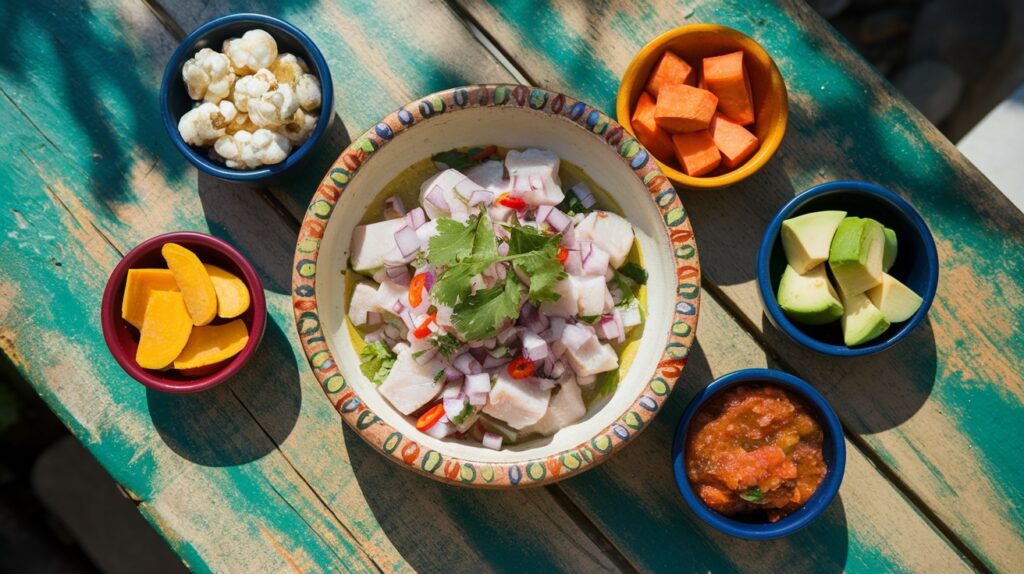

Recipe Modifications
- Dietary Modifications: For keto diets, emphasize avocado and omit any added sugar; for low-sodium diets, reduce salt and balance with more herbs and lime zest
- Heat Level Adjustments: Customize spiciness by adjusting jalapeño quantity—remove seeds and membranes for mild heat, or substitute with habanero for serious spice lovers
- Seasonal Variations: In summer, add diced mango or watermelon for sweetness; in winter, incorporate blood orange or grapefruit juice for complex citrus notes
- Alternative Proteins: Try using scallops for a sweeter, buttery flavor or cooked octopus for a more substantial texture
- Vegetarian Option: Create a “mock ceviche” using hearts of palm or young jackfruit marinated in the same bright citrus dressing
Ceviche – Common Questions
What’s Ceviche Made of?
At its core, ceviche consists of fresh seafood (typically white-fleshed fish or shrimp), abundant fresh lime juice (the “cooking” agent), aromatic herbs (primarily cilantro), red onion, and chili peppers for heat. Additional ingredients may include tomato, avocado, and bell peppers depending on regional styles. In Peruvian variations, you’ll find ají amarillo paste for authentic flavor, while Mexican versions might incorporate Clamato juice or tomatoes. The seafood component requires sashimi-grade quality for raw preparations, ensuring both safety and optimal texture.
Is Ceviche Healthy?
Ceviche is exceptionally nutritious as it features lean protein from seafood, healthy fats (especially when avocado is included), and an abundance of fresh vegetables and herbs. The dish is naturally low in calories, carbohydrates, and contains no added fats beyond what’s found in the seafood itself. The preparation method preserves nutrients that might be lost in high-heat cooking. Those monitoring sodium intake should be aware of the salt content, and immunocompromised individuals, pregnant women, or young children should opt for the briefly poached seafood version rather than raw preparations for safety reasons.
Is Ceviche the Same as Aguachile?
While ceviche and aguachile appear similar, they have distinct differences. Ceviche typically marinates seafood for 10-30 minutes until it’s “cooked” through, resulting in an opaque appearance. Aguachile, a Mexican specialty, uses a shorter marination time where the seafood remains closer to its raw state. Aguachile’s marinade is typically spicier, featuring serrano or jalapeño chilies blended with lime juice, and is served immediately after assembly. Both dishes celebrate fresh seafood in citrus, but aguachile offers a more immediate, raw experience while ceviche provides a slightly more transformed texture.
Can You Use Ceviche in Other Dishes/Ways?
Absolutely! Leftover ceviche (consumed within 24 hours) can be repurposed in creative ways. Use it as a flavorful topping for tostadas or as filling for fish tacos with added cabbage slaw. Chop it more finely and fold into scrambled eggs for a seafood-forward breakfast. Transform it into a refreshing pasta salad by adding cooked, chilled orzo or small shell pasta. For an elegant appetizer, spoon small portions into endive leaves or cucumber cups. You can even use it as a vibrant stuffing for avocado halves, creating a beautiful presentation for brunch or light lunch.
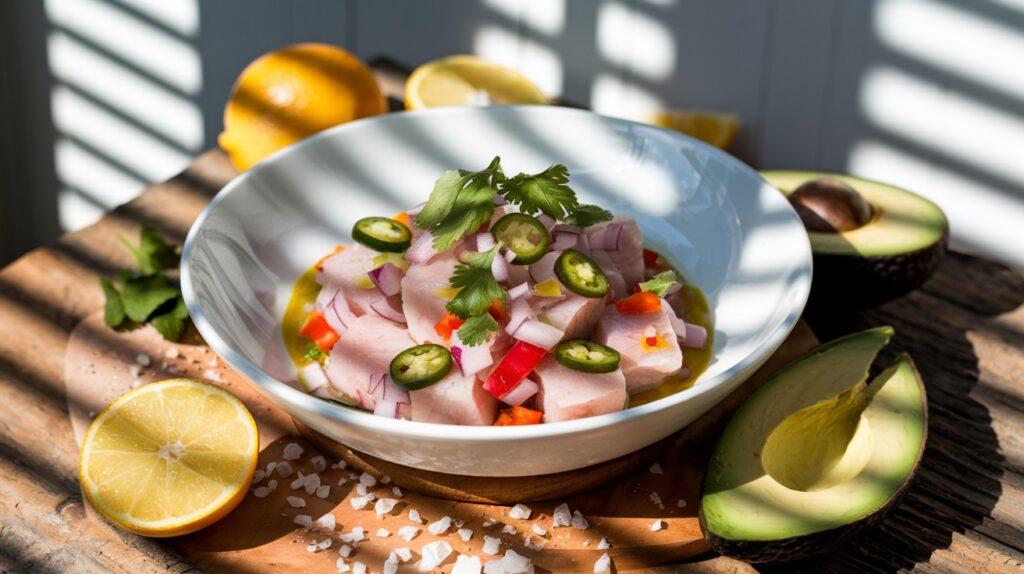

Serving Suggestions
Serve ceviche with an array of accompaniments that complement its bright flavors. Traditional options include tortilla chips, tostadas, or plantain chips for scooping. For an authentic Peruvian experience, offer sweet potato slices and large kernel corn (choclo) alongside. Fresh butter lettuce cups provide a refreshing, low-carb option for serving. Beverage pairings that enhance ceviche include crisp white wines like Albariño or Sauvignon Blanc, Mexican lagers with a lime wedge, or a citrusy mocktail with sparkling water. For special presentations, serve in coconut halves, hollowed citrus fruits, or martini glasses for an elegant touch.
Make-Ahead and Storage Tips
Ceviche is best enjoyed fresh, but you can prepare components ahead of time to streamline assembly. Chop vegetables, squeeze lime juice, and prepare any accompaniments up to 24 hours in advance, storing them separately in airtight containers. The fish should be cut just before marinating for optimal freshness and food safety. Once assembled, ceviche can be refrigerated for up to 24 hours, though the texture will continue to change as it marinates—becoming more “cooked” over time. Ceviche does not freeze well, as the seafood texture becomes compromised upon thawing. For food safety, always maintain proper refrigeration below 40°F and consume within a day of preparation.
Ceviche Recipe
Fresh seafood “cooked” in citrus juice with vibrant flavors of lime, cilantro, and jalapeño.
- Prep Time: 15 minutes
- Cook Time: 15 minutes (marination time)
- Total Time: 30 minutes
- Yield: 4 cups 1x
- Cuisine: Peruvian/Latin American
Ingredients
For the Ceviche:
- 1 pound sashimi-grade white fish (sea bass, red snapper, or halibut), cut into 1/2-inch cubes
- 3/4 cup fresh lime juice (from approximately 6-8 limes)
- 1/4 cup fresh lemon juice (from approximately 2 lemons)
- 1/2 red onion, finely diced
- 1–2 jalapeños, seeds removed and finely diced (adjust to taste)
- 1/4 cup fresh cilantro, chopped, plus more for garnish
- 1 tablespoon olive oil
- 1 teaspoon sea salt
- 1/4 teaspoon black pepper
- 1 firm-ripe avocado, diced (added just before serving)
Optional Additions:
- 1 teaspoon ají amarillo paste (for Peruvian style)
- 2–3 tablespoons Clamato juice (for Mexican style)
- 1 roma tomato, diced
- 1/4 cup cucumber, diced
Instructions
- In a glass or ceramic bowl, combine the diced fish with fresh lime and lemon juices. Ensure all pieces are submerged in the citrus juice. Refrigerate for exactly 10-15 minutes—this brief window creates the perfect balance between flavor development and texture.
- While the fish marinates, prepare your vegetables—dice the red onion, jalapeño, and cilantro. Have them ready alongside your measured olive oil, salt, and pepper.
- After the marination period, add the diced vegetables, olive oil, salt, and pepper to the fish. Gently fold everything together with a rubber spatula, being careful not to break apart the delicate fish pieces.
- Just before serving, fold in the diced avocado. Taste and adjust seasoning if needed, adding more salt, lime juice, or jalapeño according to your preference.
- Serve immediately in chilled bowls or glasses, garnished with additional fresh cilantro. Accompany with tortilla chips, tostadas, or lettuce cups for a complete presentation.
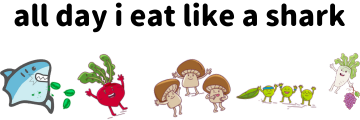



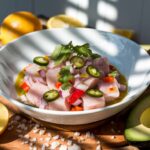
Konnichiwa! (Hello!) I'm Pat Tokuyama, a Japanese tofu cookbook author, who travels for music, food, and adventure. If you like Japanese tea, checkout some of the newestorganic japanese tea, matcha bowls and noren and more!
** Curious about the Plant Based Japanese Cooking Club? ** Learn more here!